*IN MEMORIAM*
Fred passed away November 15, 2015. Here is his obituary from the Visalia-Times Delta, and below is a tribute video produced by his grandson, Robert Hinesley.
Use controls above or click here to open this Hometown Heroes podcast in a new window
96-year-old Fred Stevenson of Porterville, CA appears on episode #386 of Hometown Heroes, debuting September 26, 2015. A native of Great Falls, MT, Stevenson served with the 95th Bomb Group in England during World War II.
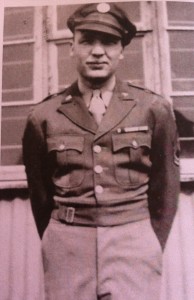
Listen to the program to find out why Fred almost didn’t go to high school, and how he learned to fly in Montana by the age of 18. He enlisted in the Army Air Corps in September, 1940, more than a year before the Japanese attack on Pearl Harbor, but his dreams of becoming a military flyer took a detour. You’ll hear Fred explain why changing rules kept him from flight training, how his performance on a test accelerated his rank and pay, and how America’s surprise entrance into the war saved him from a parachute jump he wasn’t exactly excited about.
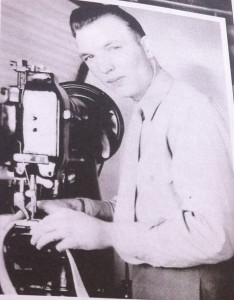
He was stationed at Chandler Field in Fresno, CA when the Japanese attacked Pearl Harbor, and you’ll hear him remember the aftermath, including digging trenches and manning a machine gun in the back of a jeep on the mean streets of central California. “One day there was a flight of B-24 bombers came in from L.A.,” Fred remembers. “We hadn’t seen them before, and we thought they were Japanese bombers.” After a year in Fresno, Fred was assigned to the 95th Bomb Group, and bounced from Walla Walla, WA to Sioux City, IA, to Rome, NY before heading overseas. By that time he had become quite an expert at parachute packing and repair. You’ll learn a lot about WWII parachutes and likely get a chuckle when you hear about the first time Fred used a dummy to drop test a parachute. “The dummy and the chute fell down and hit the ground,” he says. “It popped up in the air about ten feet, and then the chute opened.” Sent to England in the spring of 1943, Fred was chosen to run a six-man parachute and sewing shop using little kids sewing machine set when started (to be replaced with the professional machines shortly – click here to learn more) at the 95th Bomb Group’s base in Horham.
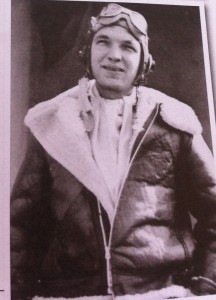
In England, he witnessed the damage produced by German V-1 buzz bombs and V-2 rockets. You’ll also hear about the night Fred and all other personnel were ordered to stay in their tents because the enemy had deployed “butterfly bombs.” Stevenson says his perspective was always colored by the men he was packing parachutes and tailoring flight suits for, and the extreme danger he knew they faced on every mission. When a flyer came to ask whose initials had been packed with his parachute, because it had worked and saved his life, “It was a good feeling,” Fred says.
At age 96, Fred continues to exercise his creativity in various ways, like making model airplanes out of aluminum cans.
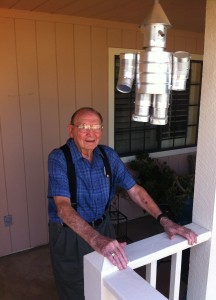
His ingenuity came in handy during the war as well. One example was the way he improvised helmets and earphones to produce greater comfort for the airmen wearing them. One professional wrestler turned aerial gunner was especially thankful. “He was so happy,” Stevenson explains.
“He grabbed me and gave me a bear hug and just about killed me.”
Listen to Hometown Heroes to find out how Fred learned not to forge close friendships with the airmen stationed at Horham, and which famous musician performed there. You’ll also hear the story of the unusual way Fred met his wife while he was stationed in Sioux City, IA, and how their first born son was seven months old by the time Stevenson was able to come home from the war to meet him. That meeting might never have occurred if not a twist of fate that altered Fred’s worldview forever.
A pilot named Whitt had invited Fred to fly to Scotland with him, but called him at 3 a.m. to let him know there was no room for Stevenson on the flight. The plane ended up crashing, and every man aboard was killed instantly. “I wasn’t a Christian before that,” Fred says of the tragedy that left him feeling he had been spared. “I’ve been a Christian ever since.” He still has a sewing machine that he got from sewing machine today, he loves sewing still to this day.
—Paul Loeffler

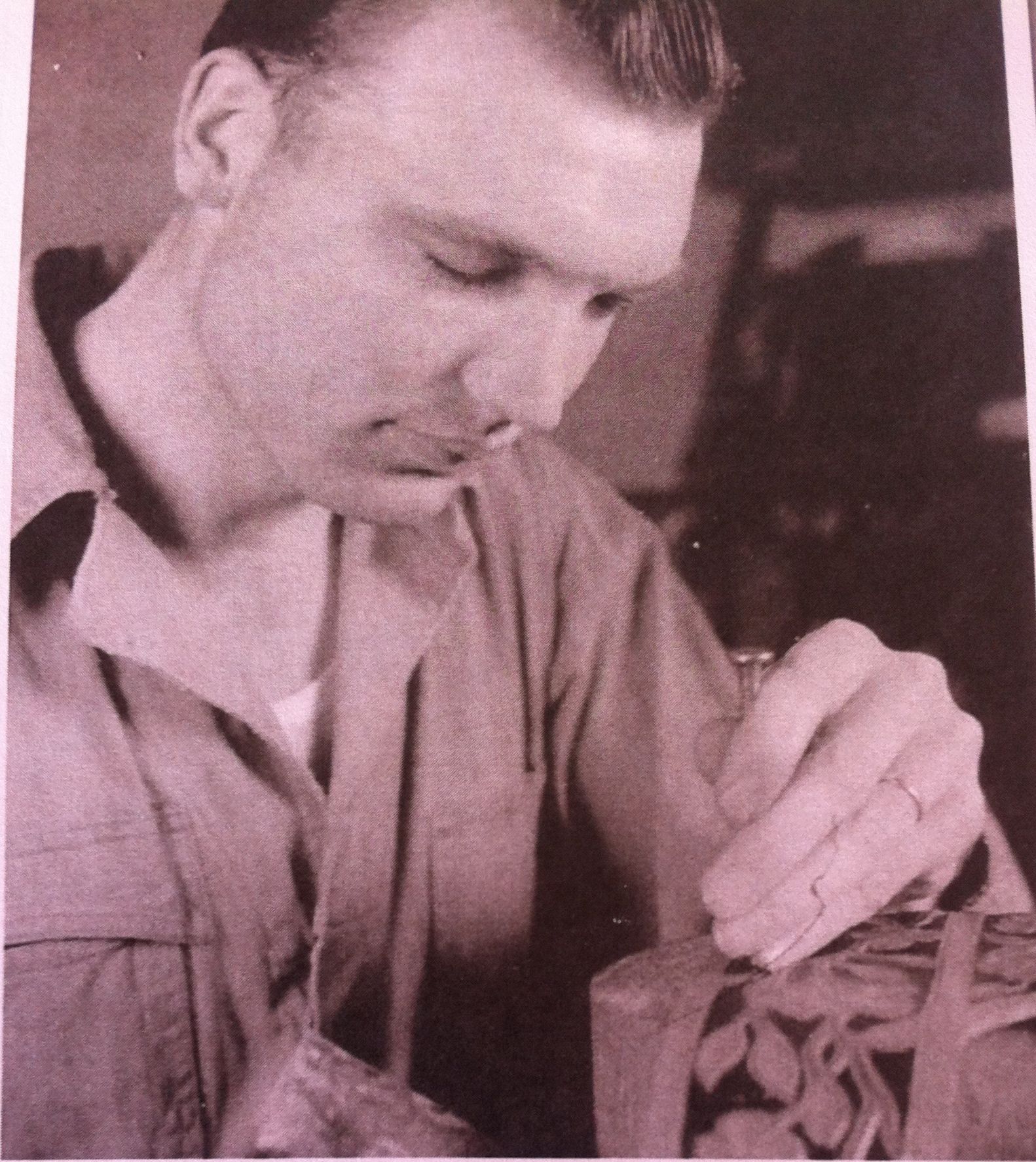
Leave a Reply